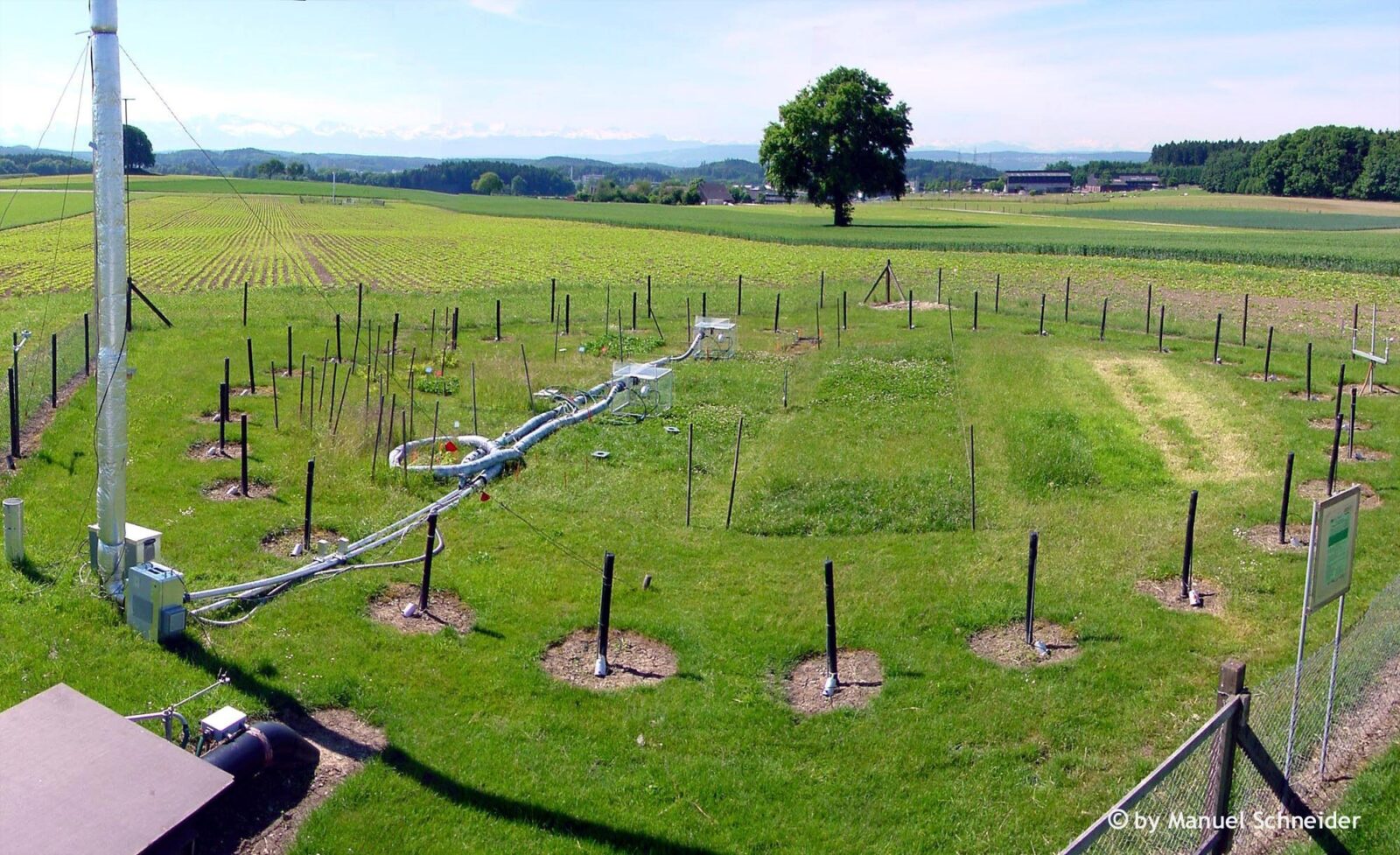Swiss FACE
Atmospheric CO2 increase studied under real outdoor conditions
Professor J. Nösberger’s research group, in collaboration with research groups from Switzerland, Europe and overseas, investigated the effects of increased CO2 concentrations in the atmosphere and intensification of management on grasslands. Surprising interactions between atmosphere, plants and soil were discovered that would not have occurred in greenhouse or climate chamber experiments.

The free-air CO2 enrichment (FACE) technique developed for forest ecosystems was adapted and further developed for grassland ecosystems by Brookhaven National Laboratory, Lupton, USA, at the experimental station of the Institute of Plant Sciences in Eschikon. This allowed the effects of atmospheric CO2 concentrations expected in 50 to 75 years to be studied on six 200-square-metre areas.
The trials contained an extraordinary breadth of aspects. Highly productive cultivars of the two most important species for forage production in temperate climates, white clover (Trifolium repens) and English ryegrass (Lolium perenne), were studied, but also a wide range of species and ecotypes from semi-natural grassland. In addition to the atmospheric CO2 concentration, the intensity of management (nitrogen fertilisation and cutting frequency) was also strongly varied. On the one hand, this made it possible to compare the effect size of the CO2 increase with that of an intensification of management. On the other hand, the different nitrogen availability allowed to identify and better understand the main processes of the ecosystem’s CO2 response.
Major differences between plant species
In greenhouse studies elevated atmospheric CO2 strongly increased photosynthesis, which consequently led to higher yields. Surprisingly, in FACE grasses at low N fertilization produced lower yields at elevated CO2 even though their photosynthesis was increased. However, clover species were able to benefit strongly. They yielded more and were significantly more competitive in mixed stands.
Labelling experiments with carbon isotopes (13C, 14C) were able to show that the increased photosynthesis in the grasses did not affect yield because the assimilates were invested into roots. Using the stable 15N isotope, it could be proven that the clover species strongly increased the symbiotic fixation of atmospheric nitrogen under elevated CO2. This was the key to their success under elevated CO2.
Feedback from the soil
Although the CO2 concentration in the soil is much higher than in the atmosphere and is also not directly influenced by the atmosphere, CO2 fumigation of the atmosphere led to major changes in the soil. These were obviously triggered by the fumigated plants. Thus, under elevated atmospheric CO2, denitrification was increased, the structure of soil microorganisms was altered and less nitrogen was available to plants, which in turn fed back on the plants and could explain the different response of clover and grasses.
The collaboration of recognised experts from different disciplines has resulted in over 100 publications in international scientific journals. The results show the great importance of feedback effects between atmosphere, plant and soil, which can only be studied in experiments under realistic field conditions.